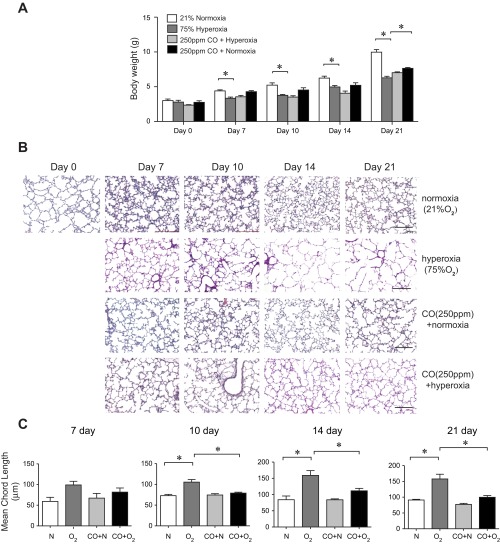Fig. 1.
Low-intermittent-dose CO partially mitigates the effects of hyperoxia on body weight and alveolar arrest in neonatal mice. A: group mean body weight at 3, 7, 10, 14, and 21 days of life under conditions of normoxia (n = 167), hyperoxia (n = 106), CO + normoxia (n = 52), and CO + hyperoxia (n = 64). Hyperoxic exposure decreased body weight compared with normoxia. On day 21 of exposure, mice of the hyperoxia + CO group were significantly larger than mice of the hyperoxia group (*P < 0.05, ANOVA). B: representative images of hematoxylin and eosin-stained lungs of neonatal mice exposed to normoxia (21% oxygen), hyperoxia (75% oxygen), intermittent exposure to 250 ppm carbon monoxide plus compressed air for 1 h twice daily (normoxia + CO), or 75% oxygen and 250 ppm CO for 1 h twice daily (hyperoxia + CO). Compared with air-exposed mice, hyperoxia-exposed mice demonstrated increased alveolar size indicative of alveolar development arrest. CO-treated mice exposed to hyperoxia showed attenuated alveolar simplification compared with hyperoxia-exposed mice. CO-treated mice exposed to normoxia showed similar alveolar architecture as normoxia-treated mice. Solid bar scale = 200 μm, and all panels are ×200. C: corresponding group mean linear intercepts of all groups. Data are reported as means ± SE. n = 17–24 per group, *different from hyperoxia, P < 0.05. All data were assessed by 1-way ANOVA.

